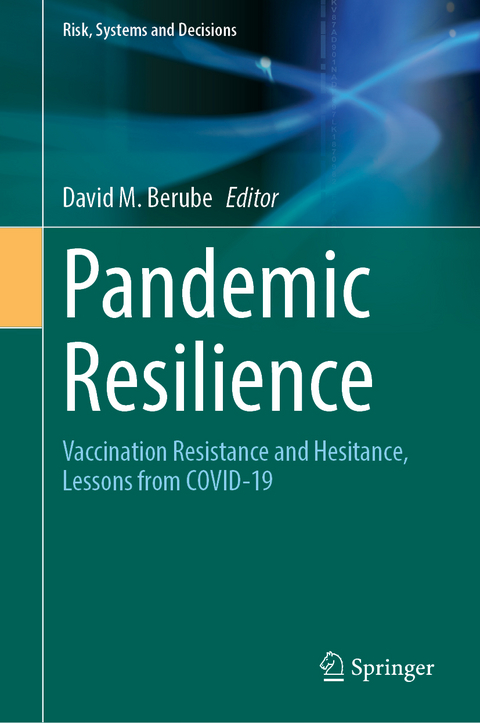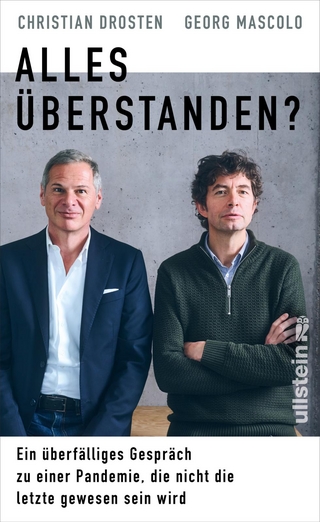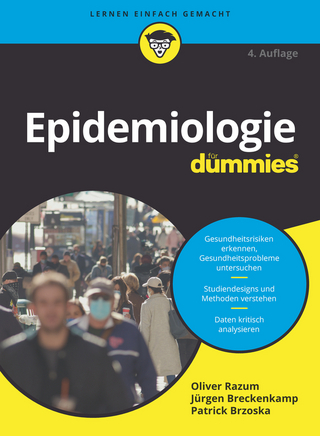
Pandemic Resilience
Springer International Publishing (Verlag)
978-3-031-74061-9 (ISBN)
- Noch nicht erschienen - erscheint am 23.01.2025
- Versandkostenfrei innerhalb Deutschlands
- Auch auf Rechnung
- Verfügbarkeit in der Filiale vor Ort prüfen
- Artikel merken
This edited volume draws from health communication scholars and offers a depthful examination of the roles vaccination have played and continue to play in contributing to human, community, and transnational protection against infectious diseases. The problems associated with vaccination against infection diseases was made abundantly clear during the current pandemic of COVID-19. Vaccines were traced back to Dr. Edward Jenner in the 18th century as a tool to control smallpox in England. Today we have six different categories of vaccines (three seem most controversial today): inactivated, live-attenuated, and messenger RNA (mRNA). We examine the reasons for public reluctance and outright resistance to vaccines examining cognitive biases, communication campaign failures, politicization, misinformation, partisanship, and greed. The healthcare industry has not treated all infected people equally, especially the poor and people of color. This is true in the USA as well as abroad. In the future, we can expect more exotic infections to increase due to globalization, development, and transportation. As climate changes, humans will contact more species carrying many different bacteria and viruses. Advances in medical research have led to increases in the number of vaccinations available to control infection and outbreaks. However, the rates of vaccination have fluctuated over time. A vaccine that is not used is meaningless. To increase vaccination rates, we must learn why the public shies away from vaccinations and under what circumstances. This information will enable us to design more effective messaging and communication campaigns to maximize general resilience. An interactive partnership between providers of healthcare and their patients is a prerequisite to productive and effective vaccination campaigns
David M. Berube is a Professor of Communication at North Carolina State University with an emphasis in science and technology communication. He is an affiliated professor in environmental studies, science and technology studies, genetic engineering and soceity, and climate change and society studies as well. He has a background in biology, psychology, and communication, esp. science communication and rhetorical studies of science. He received his doctorate in 1990 from NYU. He teaches graduate seminars in risk communication, hazard communication, pandemic communication, climate change communication, and social media. He serves and has served on multiple national and international task forces, councils, centers, etc., dealing with science and emerging technologies and the public sphere. He reviews federal grants for the NSF and others and has received over $20 million in funding over the last decade and one-half. He completed a 4-year $1.5 million NSF grant on how the public understands complex toxicological information on nanoparticles. He is a CoPI on the NNCI RTNN 10-year grant and directs the assessment of the labs under the grant on the campuses of UNC-CH, Duke, and NCSU.
Introduction - Berube - NCSU.- UNIT 1 - WHY HESITANCY?.- 1.1 Vaccinations in the Shadow of Eugenics -Schwartzman, NCSU.- 1.2 Beyond Tuskegee: Trust and African Americans in America's Health System - Olatunde, NCSU.- 1.3 A Critical Analysis of Black Immunity Myths and their Deadly Consequences - Powell, Morgan State U.- UNIT 2 THE ANTI-SCIENCE AND ANTI-VACCINE MOVEMENTS.- 2.1. The Anti-science movement in 21st century America & Europe - Lunsford, U. Florida.- 2.2. Anti-vaxxers: Wakefield and the Autism Scare - Rodriguez, Weber State University.- 2.3. Cross-Partisan Conspiracy Theories: How "Plandemic" Fueled Vaccine Misinformation - Justice, U. Mississippi & Bricker, U. Kansas.- 2.4. Negative Online Support Groups - Berube, NCSU.- 2.4.1. On-Line Anti-Vaccine Movements -Trend. Luisi, U. Missouri.- 2.4.2. Athletes, Entertainers, and Political Figures: Online Influencers and the Amplification of Anti-Vaccine Voices on Social Media - Eng & Kim, U. Georgia.- UNIT 3 PRELIMINARY DIAGNOSIS.- 3.1. Minds, Made Up or Malleable? Vaccine Refusal at the Eclipse of Public Health Communication-Psychological Reactance Theory - Lee, CUNY.- 3.2. Existential Approaches To Vaccine Hesitancy: Terror Management - Harvell-Bowman, James Madison U.- UNIT 4 SECONDARY RISKS: SIDE EFFECTS AND FATIGUE. - 4.1 Secondary Effects of Covid-19 and Secondary Risks of Covid-19 Responses - Ellinport, Klasa, Galaitsi, Well, Jarman & Cummings, U.S. Army ERDC. Side-Effects - Memon, Ohio U.- 4.2.1. Side-e ect: Thrombocytopenia - Memon, Ohio U.- 4.2.2. Side-e ect: Guillain-Barré syndrome. - Memon, Ohio U. 4.2.3. Side-e ect: Myocarditis - Becktel - NCSU.- 4.3. Another Side effect: Vaccination Fatigue - Berube, NCSU.- UNIT 5. SECOND LEVEL DRIVERS IN VACCINE HESITANCY .- 5.1 Trypanophobia [Fear of needles] and Vaccine Hesitancy - Berube, NCSU.- 5.2 Fear of getting COVID from the vaccine (Breakthrough cases) - Edwards, Tarleton State U.- 5.3 "Long COVID" - Memon, Ohio U.- 5.4 Concerns about the Safety of mRNA Vaccines - Rawlings, U of North Carolina. - UNIT 6. MISCOMMUNICATION CHALLENGES.- 6.1 Aggressive COVID vaccine conspiracies - Lunsford, U. Florida.- 6.2 Exploring Emergency Use Authorizations, Operation Warp Speed, the Case of Mifepristone, and the Dynamics of Agency Decision-Making - Crosswell, U. Nevada, Reno.- 6.3. CDC and COVID Miscommunication, Uncertainty, and Cognitive Closure - Edwards, Tarleton State. - Unit 7. UNCERTAINTIES AND MISUNDERSTANDINGS.- 1 Herd Immunity: Communicating Collective Action to Suppress COVID-19 in Two Nordic countries - Mello, Northeastern U.- 7.2 Wait and see and the Free Riders. - Berube, NCSU.- 7.3 The Politicization of COVID-19 and Implications for Public Health. - Carpenter & Wimpy, Arkansas State.- UNIT 8. CHECKS ON MISINFORMATION.- 8.1 Information Overload and the COVID-19 vaccine - Hatfield, U Houston-Downtown.- 8.2 Using PEN-3 to Evaluate the Effectiveness of the CDC's COVID-19 Vaccine Communication Toolkit for Community-Based Organizations on Promoting Clinical Trials for African Americans - Powell, Moye & Edmond, Morgan State U. & Howard U.- 8.3. Recommended Approaches For COVID-19 Vaccination/Booster Messaging: An Expert Survey - Crosswell & Duan, U. Nevada, Reno & Bombara, Eastdil Secured.- UNIT 9. MESSAGING.- 9.1 Distrust Medical Professionals and Scientists and their Role in Hesitancy - Rainear, West Chester U of PA.- 9.2 Challenges for Health Departments Communicating on COVID vaccines: A Content Analysis of American Health Department Websites - Seo & Kim, Sam Houston State U.- 9.3. The impact of the Anti-science on general and COVID-19 vaccine refusal across the U.S., Europe, and the low- and middle-income countries of Africa and Latin America - Johnson & Parrish-Sprowl, IUI.- UNIT 10. SPECIAL POPULATIONS
10.1. Parental attitudes and vaccinating their children - Carrion, U. Nevada, Los Vegas.- 10.2. The Unique Challenges Faced by Indigenous Communities during the Pandemic. - Beard and Schoenbauer, U. Minnesota, Duluth, Smiles, U. Victoria, and Villard.- 10.3. Rural and other minority populations - Carpenter & Wimpy, Arkansas State.- UNIT 11. CITIZEN ENGAGEMENT.- The Building is Closed but the Ministry's Open": The Role of the Black Church Leaders in Vaccine Communication Through Black Podcast - Powell, Morgan State U. & Sumner, Howard U.- 11.2 Vaccines and Publics: A Variety of Engaging Experiences - Lee, CCNY.- 11.3 Public and Citizen Science - Rainear, West Chester U. of PA.- UNIT 12. RECOMMENDATIONS.- Rebuilding Government Trust: Harnessing Communication for Change. - Becktel, NCSU.- 12.2 Cultivating Epistemic and Argumentative Resilience to Reduce Vaccine Hesitancy - Schwartzman, NCSU.- 12.3 Vaccination is a Public Strategy not a Personal One: Rebuilding Community - Berube, NCSU
.- CONCLUSION - Berube, NCSU.
| Erscheinungsdatum | 03.01.2025 |
|---|---|
| Reihe/Serie | Risk, Systems and Decisions |
| Zusatzinfo | VIII, 556 p. 17 illus., 16 illus. in color. |
| Verlagsort | Cham |
| Sprache | englisch |
| Maße | 155 x 235 mm |
| Themenwelt | Medizin / Pharmazie ► Medizinische Fachgebiete ► Arbeits- / Sozial- / Umweltmedizin |
| Studium ► Querschnittsbereiche ► Epidemiologie / Med. Biometrie | |
| Studium ► Querschnittsbereiche ► Prävention / Gesundheitsförderung | |
| Schlagworte | Covid • Epidemics • outbreaks • pandemics • vaccines |
| ISBN-10 | 3-031-74061-0 / 3031740610 |
| ISBN-13 | 978-3-031-74061-9 / 9783031740619 |
| Zustand | Neuware |
| Informationen gemäß Produktsicherheitsverordnung (GPSR) | |
| Haben Sie eine Frage zum Produkt? |
aus dem Bereich


